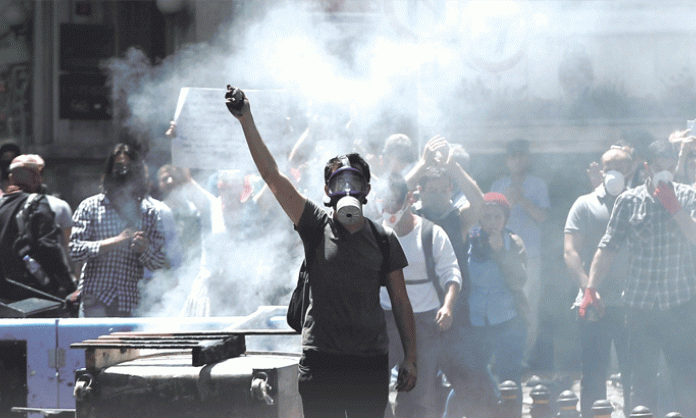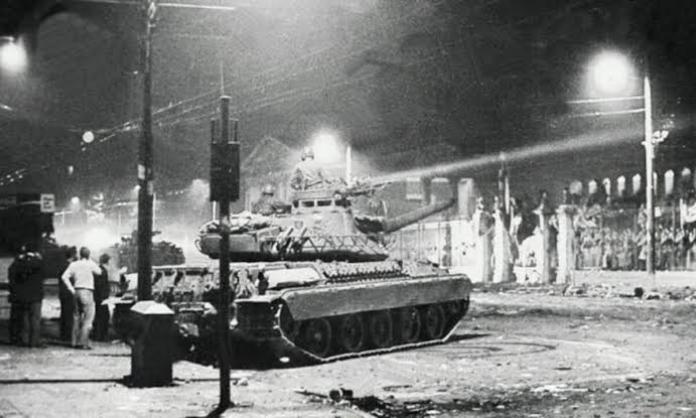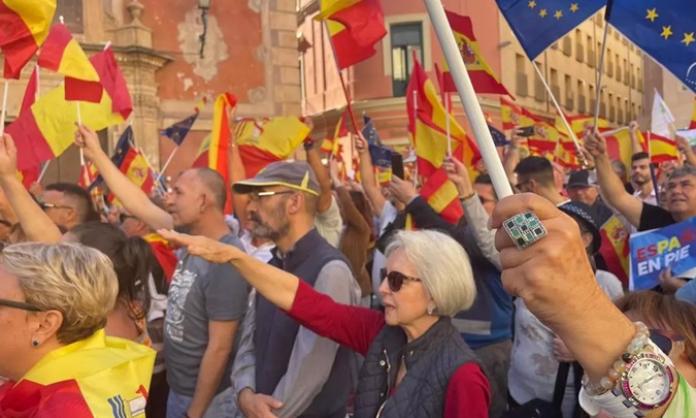After a day filled with police violence against unarmed, peaceful occupiers and protesters, one of my old friends from high school, living near Taksim Square in Istanbul reported: “It’s midnight, and my street is alive. All the neighbours are leaning out their windows, stepping out on their balconies, whistling, banging pots and pans, shouting, ‘Tayyip istifa! Tayyip istifa!’” (Resign Tayyip, resign!)
Recep Tayyip Erdoğan, the prime minister of Turkey and head of the conservative, Islamist-influenced Justice and Development Party (AKP), has been at the forefront of a neoliberal reinvention of Turkey. This has included the nearly complete privatisation of nationalised industries, the rise of Turkey as a regional power with its sights set on domination of natural resources in the Mediterranean – and the utter destruction of ancient Byzantine and Ottoman neighbourhoods in Istanbul, Turkey’s largest city, in the name of urban renewal and gentrification, with the goal of turning Istanbul into a major financial centre.
This last element is what sparked the mass protests that continue to spread.
Since February 2012, Gezi Park – a small green oasis in the middle of Istanbul’s busiest district, Taksim Square – has been slated for demolition as part of the latest urban renewal project of the AKP, which has faced little to no political opposition over the past several years. The government’s plan is to build a replica of the Taksim Military Barracks, demolished in 1940 – and turn the structure into a shopping mall.
With construction about to go forward, on Monday, 27 May, a series of semi-spontaneous protests resulted in the occupation of Gezi Park by a small group of activists determined to stop the uprooting of trees and green space. That night, bulldozers began demolishing the walls of the park – but the process was slowed by the occupiers.
The protests built over the following days. Each night during the week, according to Sungar Savran, editor of the newspaper Isci Mucadelesi (Workers’ Struggle), the police waited until the pre-dawn hours to launch their vicious attacks on protesters: “Istanbul has become a battlefield covered by tear gas ... This would have been no news at all: Turkish police are famous for their brutality in dealing with demonstrations unwelcome to the government. Only a month ago, on May Day, they dispersed a gathering of thousands of workers and unionists using tear gas unsparingly ... The difference lies in the determination and audacity of the protesters.”
By Friday, Gezi Park was sealed off by police as the street confrontations continued. But the shocking images of police brutality had by now spread around the world, sparking outrage – and the biggest mobilisations in Turkey itself were still to come.
Yusuf Cemal, an independent trade union activist, reported: “They [the cops] even used real bullets – we didn’t know if there was anyone dead or not. We were fighting them from 7 pm until 6 am”
Onur Devrim Üçbaş, a socialist activist and member of the Revolutionary Socialist Workers Party, described the situation: “There were socialists, anarchists, climate activists and all sorts of concerned citizens. Police attacked barbarically again; using their gas bombs to shoot people in their heads. That attack changed everything.
“The main initiative “Taksim Solidarity” called for a massive protest on Friday. More than 10,000 people came to Taksim that evening and did not retreat, despite hundreds of tear gas bombs. Then the struggle spread to other cities, on a massive scale. Today, 1 June, more than 100,000 took back the park and Taksim Square. Police used plastic bullets and water cannons. More than 900 people were detained, and at least a dozen were seriously injured. There have been no fatalities for now.
“The movement spread literally all over Turkey, tens of thousands marched in big cities such as Ankara and Izmir. The participants were not the ‘usual suspects’ thousands of young people joined a political march for the first time. They were labelled as ‘apolitical’ by older generations, but now we are taking part in politics.”
What started as a comparatively small protest to protect a park and its history from destruction has turned into a watershed moment. It has galvanised all of the unacknowledged grievances, political problems and latent anger in a country that has been shifting more and more toward a one-party state promoting conservative religious values and a swifter-than-ever conversion to neoliberalism.
The protests in Istanbul – and, now, across the rest of Turkey – have given confidence to the trade union movement. This is a movement with a rich history of struggle, but also of repression. It has remained largely passive over the past decade of neoliberal reforms under the AKP. One of the four main unions in Turkey, the Confederation of Public Workers’ Unions, called a sector-wide strike on 5 June.
The plan to destroy Gezi Park is part of a wider agenda for Istanbul and all of Turkey. It began in earnest in 2008, when the city was declared a “capital of culture” for 2010. For Erdoğan and the AKP, this was a green light for further development and urban “renewal” plans, concentrated in their hands.
Taksim Square, where Gezi Park is located, has been a profound symbol for the Turkish left since May Day in 1977, when dozens of trade union militants and radicals were massacred by still unknown assailants. In the years following the brutal military dictatorship of the early 1980s, protesters tried to take Taksim on May Day as a symbolic gesture to fallen comrades.
In 2010, the police opened the square up for May Day demonstrations under tight security – this past May Day, it was shut down gain, and trade union activists and other leftists were met with state violence.
The future of a different Turkey lies in Taksim Square – with a new generation taking up this fight.
[First published at SocialistWorker.org]










